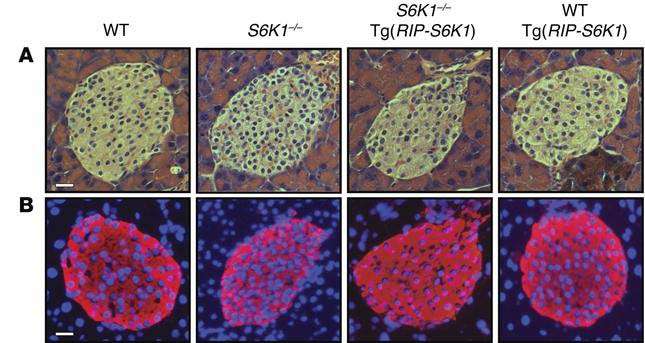Researchers find a potential target for the treatment of type 2 diabetes

Currently, there are more than 350 million type 2 diabetics and according to the World Health Organization (WHO) by 2030 it will be the 7th leading cause of death worldwide.
The hallmark of type 2 diabetes is insulin resistance, which is initially compensated for by an increase in beta cell size (responsible for producing insulin). However, the beta cells of such patients will eventually collapse and die, leading to full blown type 2 diabetes.
Researchers from the Laboratory of Cancer Metabolism at IDIBELL, led by Sara Kozma, have shown in animal models that inhibition of S6K1 protein may be a potential treatment for type 2 diabetes.
In a study published this week in the Journal of Clinical Investigation, they have shown that animals lacking S6K1, a protein kinase, are more sensitive to insulin, so they require less and do not develop diabetes.
Smaller mice and with less insulin
In previous studies the Kozma group had observed that S6K1 deficient mice were smaller in size and displayed reduced circulating insulin levels in the blood. "We showed that beta cells of these animals were smaller and produced less insulin," explains the researcher. "We also showed that in the absence of S6K1, peripheral tissues of the animal became more sensitive to insulin and did not develop diabetes, even when placed on a high fat diet."
In this study, the Kozma group used embryonic rescue methodology to understand why beta cells of S6K1 deficient mice were smaller. They aggregated S6K1 deficient embryonic stem cells, with placentas of wild type mice and observed that although embryos developed to the normal size, beta cells remained small. The beta cell size was independent of the mouse development in utero, yet the absence of S6K1 in peripheral tissues increased whole animal insulin sensitivity. Thus inhibitors of S6K1 may serve as potential insulin sensitizers to protect against insulin insensitivity and to treat type 2 diabetes.
More information: Sung Hee Um, Melanie Sticker-Jantscheff, Chau Gia Cac, Kristina Vintersten, Matthias Mueller, Yann-Gael Gangloff, Ralf H. Adams, Jean-Francois Spetz, Lynda Elghazi, T. Paul Pflug, Mario Pende, Ernesto Bernal-MIZRACHI, Albert Board, Matthias H. Tschöp, George Thomas and Sara C. Kozma. S6K1 controls pancreatic β cell Independently of size intrauterine growth restriction. Journal of Clinical Investigation. 2015 DOI: 10.1172/JCI77030



















